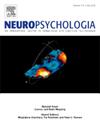From MRIcro to MRIcron: The evolution of neuroimaging visualization tools
IF 2
3区 心理学
Q3 BEHAVIORAL SCIENCES
引用次数: 0
Abstract
Visualization software is a critical component at every stage of neuroimaging research. It enables researchers to inspect raw or processed datasets for artifacts, to identify anomalies, to verify the accuracy of automated processing, and to interpret the location of statistical results within the complex structure of the human brain. Since 2006, MRIcron has provided a free, open-source, cross-platform tool designed to meet these needs. Despite its minimal system requirements, MRIcron supports various popular neuroimaging file formats, ensuring compatibility with widely-used tools in the field, such as SPM, FreeSurfer, FSL, and AFNI.
The intuitive graphical interface allows for straightforward image visualization and manipulation, while its advanced features such as lesion drawing and ability to handle many image formats cater to more sophisticated analyses. Furthermore, MRIcron's scripting capabilities enable users to automate complex workflows, facilitating the efficient processing of large datasets.
In summary, MRIcron is a powerful and versatile tool that addresses the visualization and analysis needs of the neuroimaging community, contributing to the advancement of brain research by providing a reliable and efficient solution for brain imaging analysis. This article describes the development of MRIcron, from its inception to the present day.
从MRIcro到MRIcron:神经成像可视化工具的演变。
可视化软件是神经成像研究的每个阶段的关键组成部分。它使研究人员能够检查原始或处理过的数据集,以识别异常,验证自动化处理的准确性,并解释人脑复杂结构中统计结果的位置。自2006年以来,MRIcron提供了一个免费的、开源的、跨平台的工具来满足这些需求。尽管它的系统要求很低,但MRIcron支持各种流行的神经成像文件格式,确保与该领域广泛使用的工具(如SPM, FreeSurfer, FSL和AFNI)兼容。直观的图形界面允许直接的图像可视化和操作,而其高级功能,如病变绘图和处理许多图像格式的能力,迎合更复杂的分析。此外,MRIcron的脚本功能使用户能够自动化复杂的工作流程,促进大型数据集的有效处理。总之,MRIcron是一个功能强大的多功能工具,它解决了神经成像社区的可视化和分析需求,通过提供可靠和有效的脑成像分析解决方案,为脑研究的进步做出了贡献。这篇文章描述了MRIcron的发展,从它的开始到现在。
本文章由计算机程序翻译,如有差异,请以英文原文为准。
求助全文
约1分钟内获得全文
求助全文
来源期刊

Neuropsychologia
医学-行为科学
CiteScore
5.10
自引率
3.80%
发文量
228
审稿时长
4 months
期刊介绍:
Neuropsychologia is an international interdisciplinary journal devoted to experimental and theoretical contributions that advance understanding of human cognition and behavior from a neuroscience perspective. The journal will consider for publication studies that link brain function with cognitive processes, including attention and awareness, action and motor control, executive functions and cognitive control, memory, language, and emotion and social cognition.
 求助内容:
求助内容: 应助结果提醒方式:
应助结果提醒方式:


